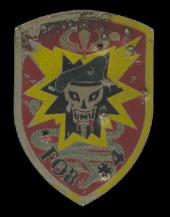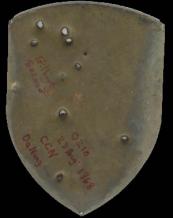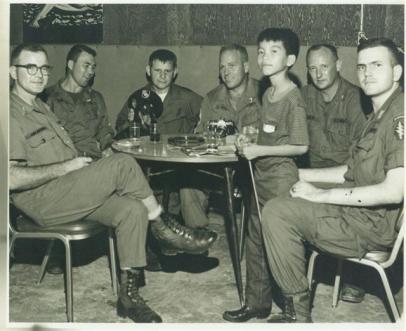Years ago, there was a fire at the house I was living in and everything I owned was lost. I never thought I would be able to replace the medals/ribbons that I was awarded while serving. Until I came across your site. Thank you!!!!
The Story Of The Plaque
U.S. Military Assistance Command Vietnam's Studies And Observation Group
The Military Assistance Command, Vietnam Studies and Observations Group (MACV-SOG) was a highly classified, multi-service United States Special Forces unit which conducted covert unconventional warfare operations prior to and during the Vietnam War. Established on 24 January 1964, the unit conducted strategic reconnaissance missions in Republic of Vietnam (South Vietnam), the Democratic Republic of Vietnam (North Vietnam), Laos, and Cambodia; carried out the capture of enemy prisoners, rescued downed pilots, and conducted rescue operations to retrieve allied prisoners of war throughout Southeast Asia; and conducted clandestine agent team activities and psychological operations.
The unit participated in most of the significant campaigns of the Vietnam War, including the Tonkin Gulf Incident which precipitated American involvement, Operation Steel Tiger, Operation Tiger Hound, the Tet Offensive, Operation Commando Hunt, the Cambodian Campaign, Operation Lam Son 719, and the Easter Offensive. The unit was formally disbanded and replaced by the Strategic Technical Directorate Assistance Team 158 on 1 May 1972.
The Attack
On 23, August 1968, at 0210 hours, a large element of NVA Sappers attacked Command and Control North, (CCN), Da Nang, Republic of Vietnam. The NVA came in from the sea, after killing the Vietnamese/Yard sentries, they charge into the compound tossing bombs, charges, grenades and small arms fire into the living quarters of MACVSOG personnel. The S2 Headquarters as well as several other areas were attacked and heavily damaged. Personal heroics were displayed by MACVSOG personnel defending their base. In the aftermath, several MACVSOG personnel were killed in the battle. Most of the NVA were also killed, and those who fled were later hunted down. The top pictures shows where a satchel charge was thrown in, and where Paul Christensen was sleeping. This bomb completely destroyed the Hooch. Second Picture, Paul hold the door knob from his blown up Hooch.
This is the story of the plaque above as told to me by my father, S-2, Paul A. Christensen. Within the compound, a young Vietnamese boy lived. SOG personnel called him "Spike". Spike was the mascot of the camp, he was dressed in GI uniforms and lived among the men. While going through the burned out rubble, Spike came across this FOB #4 plaque. He walked up to my father, Paul Christensen and with sadness in his eyes, shaking his head gave it to him, (Paul). The holes in it are from NVA - AK-47 or CAR-15, M-16 rounds as well as bomb fragmentation. The burn marks are from the fires that erupted after the explosions
Paul rwrote Gilbert Secor on the plaque. Gilbert was killed in the attack. SOG personnel heard Gilbert yelling a warning "Paul look out we are under attack" before he was killed. Gilbert and my Father spent TDY in 1962-63 together in the early days of Nam. Both Medics during that tour, they were best of friends.
Spike
Spike with CCN troops & Seabees in CCN club. Spike was a Vietnamese orphan who was informally "adopted" by some guys in Recon company. He lived with them and even stayed with them up on the top of Chinstrap, at our outpost up there. Someone finally figured out that there was a security risk in all that, and hanging around with a bunch of G.I.'s wasn't getting Spike the kind of education he needed to succeed in life. So, it was arranged that Spike went to a boarding type school in DaNang. Left to Right.- SeaBee petty officer/photographer - SFC Ammon Sink, NCOIC, CCN S-2 - SFC Jerry Skiorsky (spelling?), CCN S-2 Collections NCO.




